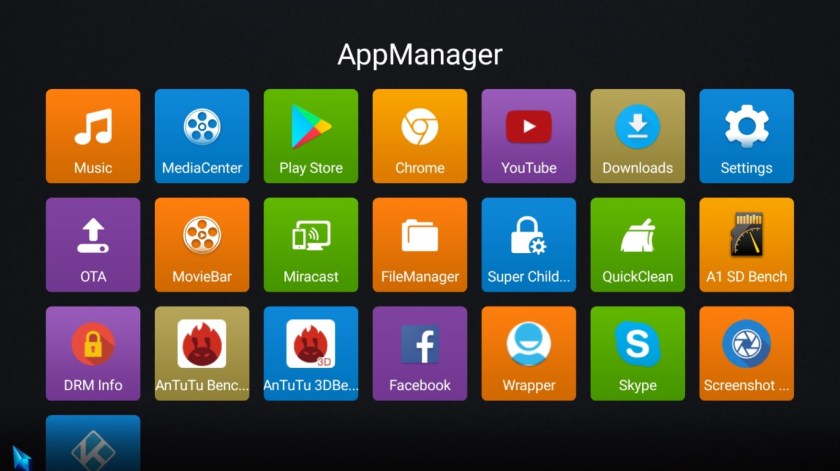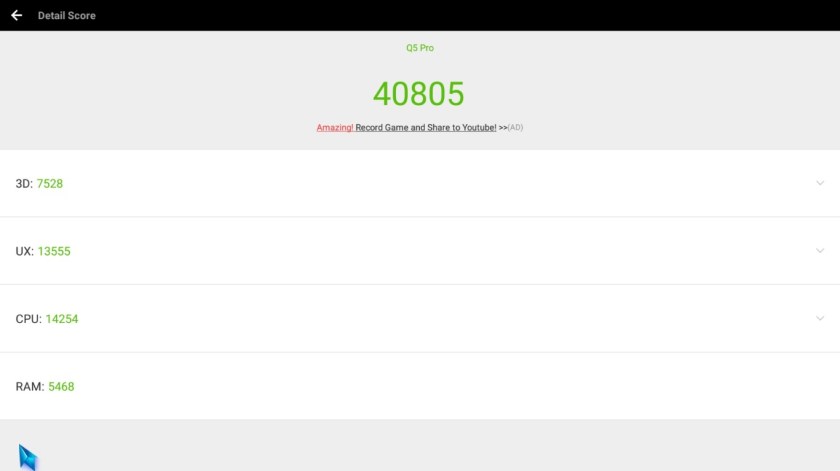It is the first time we review a Hisilicone SoC based media box.
They are considered to provide high performance and more features than the majority of the competition.
The Himedia Q5 Pro model also sports great build quality too. Lets see if performance is up to par with the rest of video playback oriented media boxes (Minix, Zidoo ,Dune)

Packaging – Specifications
Himedia Q5 Pro arrived in a white/blue box. Everything included were protected adequately so you don’t need to worry if it will travel from far away until it arrives.
Inside you will find the media player itself, the power adapter, an HDMI cable, the (IR) remote and basic documentation. Batteries for the remote are not included.
The Q5 Pro is based on Hisilicon Hi3798C V200 SoC (it is a Quad-core 64bit Cortex A53 CPU) accompanied by Mali T720 for the graphics processing.
2GB of DDR3 RAM can be considered enough for the majority of tasks, but the same cannot be said for the 8GB of ROM that are not enough to install many 3D games and applications.
I/Os are quite rich with 1x USB 3.0, 2x USB 2.0, 1x SD slot, 1x HDMI 2.0, 1x optical out and one rare (but useful for many) 1x AV out.
Networking is as good as it gets with 1x Gigabit RJ45 port, Dual band Wi-Fi and BT4.0.
Himedia Q5 Pro promises HDR (HDR10) compatibility, HD Audio pass through, auto frame rate switching, and 3D.iso playback among other basic features.
Himedia Q5 Pro is powered by Android 5.1 and an Android 7 (Nougat) FW update is already available.





Media Player – Remote
Himedia Q5 Pro impresses with its great build quality. The aluminum housing has a premium finish and the construction is solid. The centered logo on the top blends nicely and the relatively large LED display in the front makes a nice impression too. In terms of size and build quality it is comparable with the Zidoo X9S.
All USB/SD connections are on the sides (1x SD, 1x USB 3.0 and 1x USB2.0 on the left and 1x USB 2.0 on the right side) and all the basic connections (power, HDMI, optical and LAN) are at the back. The Wi-Fi antenna is not detachable and it will become an issue only if you want to keep it folded when not in use since it will clash with the basic cabling at the back (power, HDMI).
The remote is IR type and although it is (as usual) made of plastic, it has a solid build and has a very good grip as well. It features numeric keys and supports learning functions.
Overall, the quality of Himedia Q5 Pro is among the best out there and comparable to Zidoo units.








Menus – Settings
Boot time is quite short, half a minute or so. The device boots to the launcher’s main page which consists of large icons that correspond to specific applications (that can be edited/replaced with the ones you prefer). Good thing is that you are able to add shortcuts of your own from your favorite applications at the bottom of the screen.
The user interface is almost lag free and remains very responsive even after hours of use.
There are pre-installed applications (Chrome, Facebook, Skype and Netflix) but the installation can be considered as clean with no bloat-ware.
Settings menu is very different to what we have seen so far.
All the main categories are represented by a large icon, within which we find all the relevant options. It actually gives a “closed source” feeling when browsing them (categories). The rest of the settings are included in Android’s classic menu. What was strange was the absence of some popular and important options like the “accounts” one. Actually they are hidden. If you search the missing item when in classic Android menu, it will appear in the results. Not a major issue though.
At the end, setting up your unit based on your setup will be very easy and quick.








Testing
We were very curious to see how the Hisilicon SoC performs.
The overall setup is very similar to the one found in Zidoo units (X8/9s/10).
The company uses a special wrapper (Himedia patch) that enables KODI to use Himedia’s external video player (you have the option to use the KODI player if you want). This way, all major features like 3D.iso, frame rate switching and HD Audio are supported. Fortunately, the wrapper can be used to KODI 17 as well (16.1 is pre-installed).
Hisilicon SoC also integrates a video processing engine called Imprex that offers video enhancements. It is similar to VXP engine we found on latest gen media boxes from Dune. It mainly enhances dark shadows and sharpness (there are many settings) but you will need to be careful not to “crash” the image by selecting maximum settings. There is a dual screen option to check how the Imprex engine affects the image. The default settings are very aggressive and should be avoided.
1080p and 4K video playback was perfect and we encountered stutters only with not popular encodings (4K@60 H264 and Hi10p files).
The 3D stuttering issues (24hz instead of 23.976) appearing in the Android 5.1 and early Android 7 ROMs now appear to be almost ironed out (ROM 2.0.4) which is a good thing for home cinema enthusiasts.
Netflix and other DRM video streaming services once again playback at 480p only due to missing licensing.
Video playback from network shares and USB pen drivres was flawless. We had no issues streaming our BLU RAY .ISO backups, including high bit-rate ones via SMB.
Dual band ac performance was also stellar with 1080p.mkv files (average to high bit-rate) as long as you can pair it with a high performance access point.
Miracast had perfect synergy with Android smartphones (Nexus 6p and Samsung S7 edge were tested).
Gaming is solid, although you may experience some occasional lags every now and then when there are 3D intensive scenes. It is not as good as NVidia Shield but it will get the job done.



Android
Suprisingly, the Himedia Q5 Pro arrived with the 5.1.1 version of Google’s well known operating system. Recently Himedia released a new FW that is based on Nougat (7) version skipping the Marshmallow edition. It took us 3 consecutive updates to get to the final version (2.0.4 was the one that we tested) and it has to be done manually (OTA check showed no updates) but the procedure is very easy, even for inexperienced users.
After the update the already good user interface became even better with slightly better responsiveness.
DRM levels show that Android HD services are enabled, which was the case since 1080p You-Tube playback was hassle free.
As always, you are allowed to install any application you wish from the (pre-installed) Play Store although the ~4GB of free space won’t help a lot but you are able to expand the storage via the SD or USB slot.
Himedia offers frequent updates that add features and fix any bugs you may have. You can rest assured that you will have support for quite a long time since the Q5 Pro shares the same FW updates with the Q10 Pro, company’s flagship model.
Summary
The 110-130$ category is now “crowded” with Q5 Pro’s arrival.
Until now Zidoo was the king of the specific price segment with X8 and X9S. Himedia Q5 Pro is somewhere in between. Performance and support is stellar from all models but at least there are some differences that distinguish them from each other.
Zidoo X8 is plastic with no HDD enclosure and supports HDMI IN and BLU RAY menus, Himedia Q5 Pro offers Nougat update, aluminum housing and video processing while the X9S adds aluminum housing, bigger ROM, slightly better Wi-Fi range (dual antennas) and HDD enclosure.
Himedia is a quality, high performance Android media box that does all the basics in the right way and adds some flavors too. You just can’t go wrong with it, especially if you favor video playback performance.
- If this review helped you towards making your decision, we would appreciate if you made your order through the previous affiliate link(s). This way we will be able to review more products in the future.
